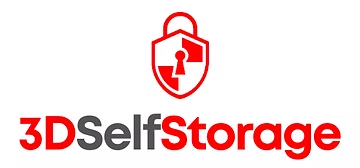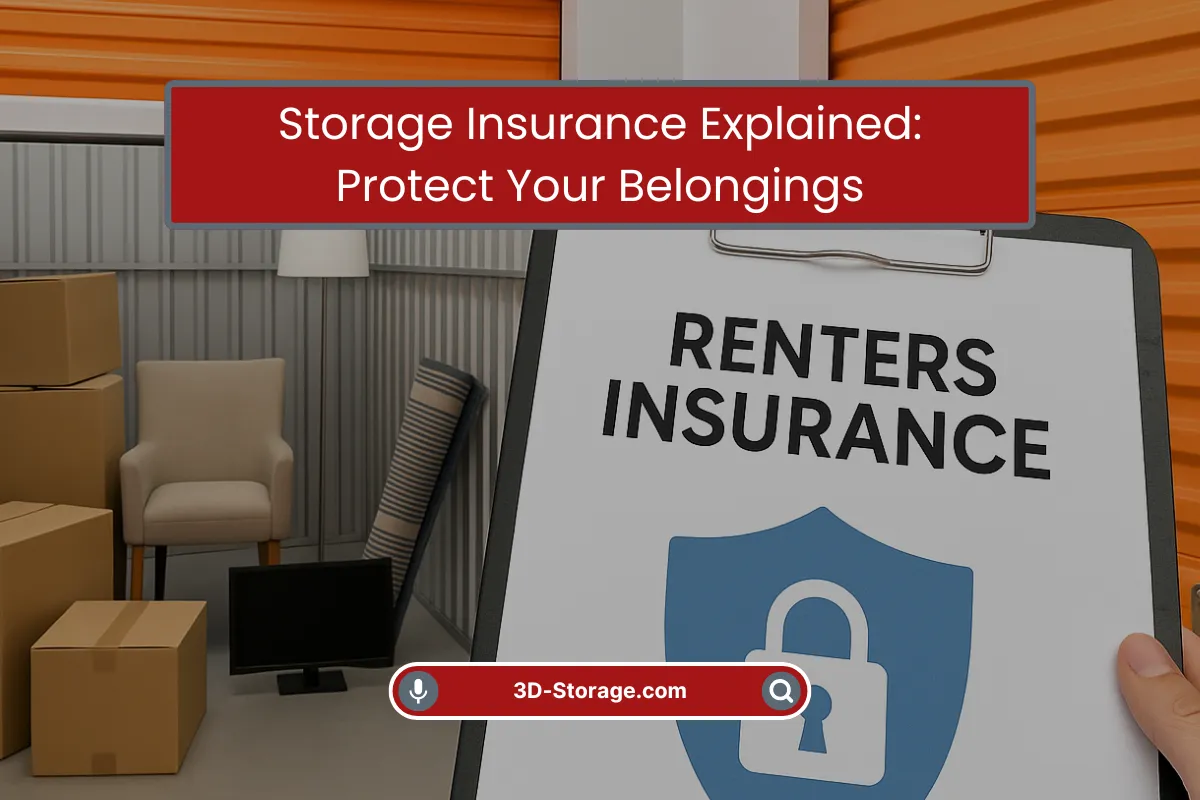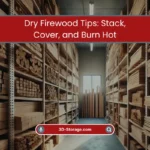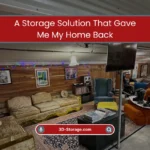Alright, lean in. I need to tell you something about storage insurance that most facilities will mumble in a brochure or bury in a lease agreement.
It’s weird. It’s confusing. And if you get it wrong, it could cost you big time.
I’m not a fan of corporate speak. I run 3D Self Storage, and I believe in being straight with people. So let’s talk about this like we’re standing in the hallway, figuring it out together.
First up, the biggest myth that needs to die.
My homeowner’s insurance
Yeah, I know. You’re thinking it. Everyone does. It’s the logical assumption. Your stuff is your stuff, right? So your policy should cover it, whether it’s in your living room or our unit.
Here’s the reality: your homeowner’s or renter’s insurance policy is like a best friend who’s great for a night out but flaky when you really need a hand. It might cover your storage unit, but it’s probably going to flake on the details.
Most policies have a stingy little clause called an “off-premises” limit. This means they might only cover 10% of your total stuff’s value when it’s not at your house. So if you have $50,000 worth of coverage, you might only have $5,000 for the unit. If you’re storing a houseful of furniture, that’s a problem.
And your deductible still applies. So if a pipe bursts and causes $2,000 in damage and you have a $1,000 deductible, you’re getting a whopping $1,000. Try replacing a water-logged sofa, a mattress, and a book collection with that.
The fix is stupid simple, but nobody does it:
Call your insurance agent. Right now, or after you read this. Don’t email. Call. Say, “I’m renting a storage unit. What is the specific, dollar-amount limit for my belongings there?” Listen carefully. Then ask, “Is it replacement cost or actual cash value?” (We’ll get to that nightmare in a second).
Here’s the Uncomfortable Part
I have to tell you this, and I hate how it sounds: The insurance we have on our facility? It’s not for your stuff.
I know. It feels like a betrayal. You see our secure gates, our cameras, our clean halls, and you think, “They’ve got this covered.”
We do. We’re covered for our building. If a truck backs into the wall, our insurance fixes the wall. If someone slips on the stairs, our insurance handles that.
Your lease agreement—and I mean every single one, everywhere—has language that clearly says we are not liable for your stored items. It’s not because we’re evil. It’s because we can’t be responsible for the unknown value of what’s behind every single door. That responsibility has to be yours.
That’s why we hassle you about it. We’re not selling you something for fun. We’re making sure you are protected. Because we’ve seen what happens when you’re not, and it’s heartbreaking.
Cutting Through The Jargon: What Actually Matters
When you shop for a policy, ignore the fancy words. Focus on these two things:
1. Replacement Cost vs. Actual Cash Value
This is the biggest gotcha in the insurance world.
- Actual Cash Value (ACV): This means they’ll pay you what your stuff was worth the minute before it was destroyed. That flat-screen TV you bought for $1,200 three years ago? They’ll deduct for age, wear, and tear, and hand you maybe $200. It’s a gut punch.
- Replacement Cost: This means they pay you what it costs to walk into a store today and buy a new version of what you lost. This is the coverage you want. It costs a few more dollars a month, but it’s the difference between actually recovering from a disaster and just getting a sad consolation check.
2. The “What If” List
Ask what specific “perils” are covered. A good policy covers the big, scary stuff: fire, theft, vandalism, wind, and water damage from a burst pipe (usually not flooding). Read the exclusions. Most won’t cover damage from pests or mildew (so pack smart!), and almost none cover collectibles, jewelry, or cash unless you specifically add them.
What To Do Before You Store Another Box
- Take a Video: Seriously. Right now. Grab your phone, walk around your place, and film what you’re about to store. Open drawers. Show the brand name on the TV. It takes two minutes and is the best evidence you can have.
- Make The Call: Call your current insurance person. Get the facts straight from the source.
- Pack Like You Care: Insurance is your safety net. Your first goal is to never need it. Use sturdy boxes. Don’t put cardboard directly on the concrete floor—put it on a pallet or a couple of 2x4s. Wrap your fragile stuff. A little effort prevents a ton of regret.
The Bottom Line
At 3D Self Storage, we’re obsessed with keeping your things safe. Our job is to provide a clean, secure, and reliable space. Your job is to make sure what’s inside that space is protected from life’s curveballs.
Get the right coverage. Then you can truly relax, knowing your stuff is safe with us, and protected from the weird, unpredictable world.








0 Comments